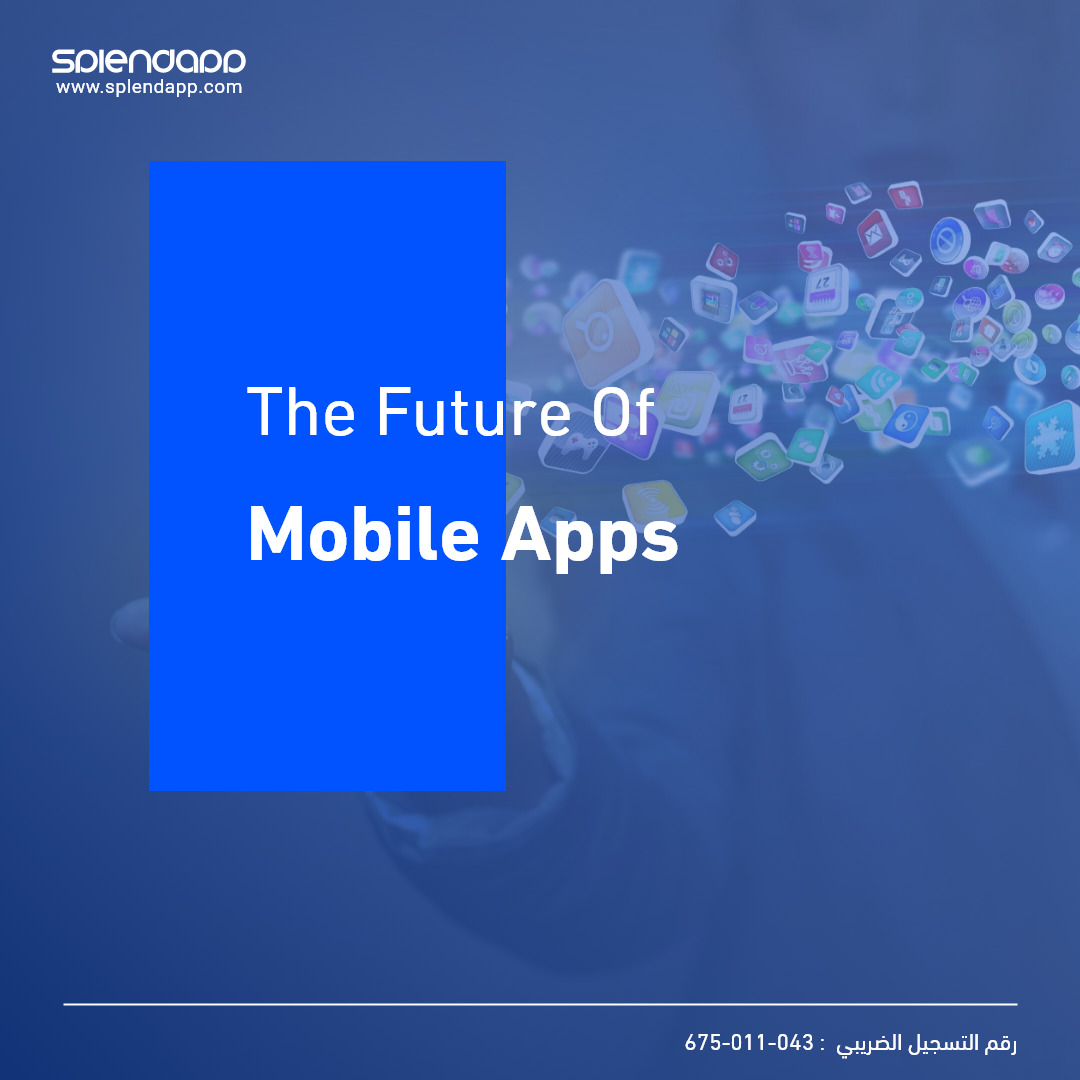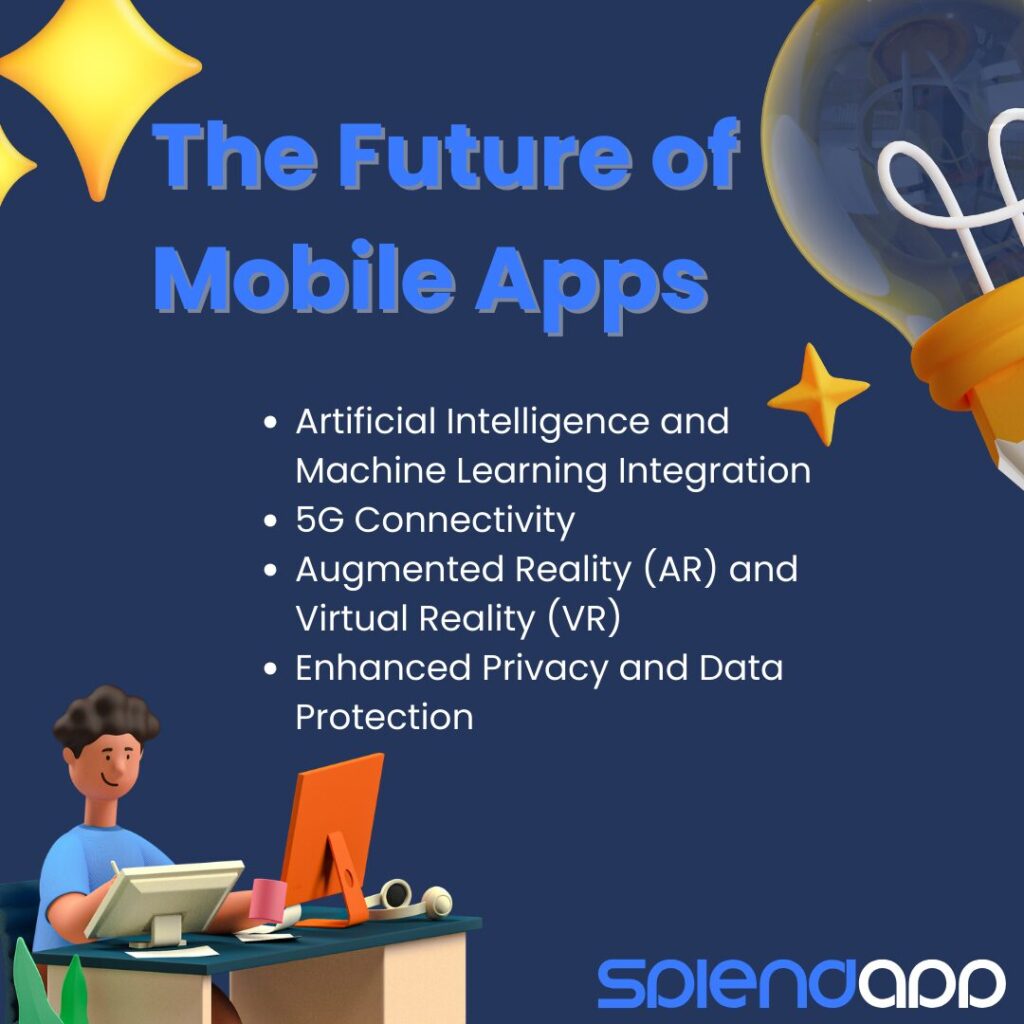

The Future of Mobile Apps holds great promise and potential, as technology continues to advance at an unprecedented pace. Mobile applications have become an integral part of our daily lives, offering convenience, connectivity, and functionality that were once unimaginable.
As we look ahead, we can expect significant changes and innovations that will shape the landscape of mobile apps in the years to come. This introduction sets the stage for exploring the exciting prospects and emerging trends in the world of mobile applications.

The Future of Mobile Apps is a dynamic and rapidly evolving landscape that promises to bring about transformative changes in the way we live, work, and interact with technology. This article delves into some of the key predictions and emerging technologies that are poised to shape the future of mobile applications.
The integration of Artificial Intelligence (AI) and Machine Learning (ML) into mobile apps represents a transformative trend that is reshaping the way we interact with technology. Here’s a closer look at how AI and ML integration are influencing the future of mobile applications:
Personalization: AI and ML enable mobile apps to deliver highly personalized experiences. Apps can analyze user behavior, preferences, and historical data to tailor content, recommendations, and features, making the app more engaging and user-centric.
Predictive Analytics: Mobile apps powered by AI can predict user needs and actions. For example, e-commerce apps can suggest products based on previous purchases, while fitness apps can provide workout recommendations based on the user’s fitness level and goals.
Chatbots and Virtual Assistants: AI-driven chatbots and virtual assistants are becoming integral components of mobile apps. They can handle customer support inquiries, answer questions, and perform tasks, offering users quick and efficient assistance.
Natural Language Processing (NLP): NLP capabilities in mobile apps enable voice recognition and understanding of natural language. This allows users to interact with apps through voice commands and have more human-like conversations with chatbots.
Image and Video Recognition: AI can analyze images and videos in real-time, which opens up opportunities for mobile apps in various domains. For instance, camera apps can identify objects, and social media platforms can suggest image captions or filter inappropriate content.
Healthcare and Diagnostics: AI and ML are revolutionizing healthcare apps. They can analyze medical data, assist in disease diagnosis, and even monitor patients’ health in real-time, offering valuable insights to healthcare professionals and patients.
Enhanced Security: AI-powered security features are improving the safety of mobile apps. Facial recognition, fingerprint authentication, and behavioral biometrics add layers of security, making it harder for unauthorized access.
Content Generation: AI-driven content generation tools can create written content, generate music, or even design graphics. This can be especially useful in content-heavy apps, creative applications, and marketing.
Recommendation Engines: Apps in various industries, such as e-commerce, entertainment, and news, use recommendation engines to suggest products, movies, or articles based on user preferences and browsing history.
Anomaly Detection: AI and ML can detect unusual patterns or anomalies in data, which is beneficial for fraud detection in financial apps, network security in communication apps, and more.
Efficient Resource Management: ML algorithms can optimize resource usage, including battery life and network bandwidth, to enhance the app’s efficiency and reduce its impact on device resources.
The advent of 5G connectivity represents a significant leap forward in the world of mobile applications. Here’s a closer look at the impact of 5G on the future of mobile apps:
Superior Speed and Low Latency: 5G offers blazing-fast speeds, significantly reducing app loading times and latency. This means that data-intensive tasks, such as streaming high-definition videos or online gaming, will become seamless and more enjoyable for users.
Enhanced Augmented Reality (AR) and Virtual Reality (VR): 5G’s low latency and high bandwidth make it ideal for AR and VR experiences. Mobile apps can provide immersive and responsive AR/VR content, ranging from gaming and entertainment to training and education.
Real-Time Streaming: With 5G, real-time video streaming becomes effortless. Live streaming apps, video conferencing tools, and social media platforms can provide higher-quality and more reliable streaming experiences, facilitating better communication and engagement.
IoT Integration: 5G enables more efficient communication with IoT devices. Mobile apps can seamlessly connect and control smart homes, connected vehicles, wearable devices, and industrial IoT applications, leading to greater automation and convenience.
Enhanced Location-Based Services: 5G’s accuracy in location tracking will improve the precision of location-based mobile apps. This is particularly valuable for navigation, delivery services, and geolocation-based marketing.
Multiplayer Gaming: Online multiplayer gaming on mobile devices will benefit from 5G’s low latency and high-speed connections. Gamers can enjoy smoother gameplay, reduced lag, and more interactive experiences.
Telemedicine and Remote Work: Telehealth and remote work apps will thrive on 5G networks, as they require stable and high-quality video conferencing and data transfer. This can improve access to healthcare and facilitate remote collaboration.
Real-Time Collaboration: Business and productivity apps will support real-time collaboration with colleagues, allowing for seamless document editing, video conferencing, and project management on mobile devices.
Content Download and Updates: Apps can be designed to automatically download content and updates in the background without affecting device performance, ensuring users have the latest information at their fingertips.
Edge Computing: 5G’s support for edge computing allows processing and data storage to occur closer to the device, reducing latency and enhancing the responsiveness of mobile apps, particularly those relying on real-time data analysis.
Smart Cities and Infrastructure: 5G networks can power smart city initiatives, enabling mobile apps to provide real-time data on traffic, energy consumption, and public services, contributing to more efficient urban living.
Augmented Reality (AR) and Virtual Reality (VR) are cutting-edge technologies that are poised to revolutionize the future of mobile applications in various ways:
Enhanced User Experiences: AR and VR technologies provide immersive and interactive experiences that go beyond traditional mobile apps. AR overlays digital information onto the real world, while VR immerses users in entirely virtual environments. This can make gaming, entertainment, education, and training applications far more engaging and enjoyable.
Gaming and Entertainment: AR and VR are transforming the gaming and entertainment industries. Mobile games can incorporate AR elements into the real world, creating games that blend digital and physical environments. VR, on the other hand, offers fully immersive gaming experiences where users can feel like they are inside the game.
Virtual Tours and Travel: Mobile apps can leverage AR to provide virtual tours of tourist destinations, historical sites, museums, and more. VR can simulate travel experiences, allowing users to explore far-off places from the comfort of their homes.
Training and Simulation: AR and VR are valuable tools for training and simulation applications. They can be used in fields such as healthcare for medical training, in aviation for pilot simulations, and in the military for tactical training.
E-Commerce and Retail: AR can enhance the online shopping experience by allowing users to visualize products in their real environment before making a purchase decision. VR can create virtual stores or showrooms for immersive shopping experiences.
Education: AR and VR can transform education by providing interactive and immersive learning experiences. Students can explore historical events, visit virtual science labs, or take field trips to distant locations using these technologies.
Healthcare: Medical professionals can use AR for surgeries with augmented displays showing critical patient data. VR can be applied in therapies and rehabilitation to engage patients in interactive exercises.
Architecture and Design: Architects and interior designers can use AR to overlay digital plans on physical spaces, helping clients visualize projects. VR can create immersive 3D walkthroughs of architectural designs.
Remote Collaboration: AR and VR can facilitate remote collaboration by creating virtual meeting spaces where users from different locations can interact as if they were in the same room.
Entertainment and Social Interaction: VR social platforms are emerging, allowing users to meet and interact with others in virtual environments, attend virtual events, and share experiences.
Advertising and Marketing: AR can be used for interactive advertising campaigns, where users engage with branded content in their real environment.
Real Estate: AR can provide property buyers with augmented property information, while VR can offer virtual property tours.
Enhanced privacy and data protection are critical aspects of the future of mobile applications. As technology evolves, so do concerns about the security and confidentiality of user data. Here are some key considerations and trends related to enhanced privacy and data protection in mobile apps:
Stricter Regulations: Governments worldwide are enacting stricter data protection regulations, such as the European Union’s General Data Protection Regulation (GDPR) and the California Consumer Privacy Act (CCPA). Mobile apps must comply with these regulations, which include transparent data handling, user consent, and data breach reporting.
User Consent and Control: Mobile apps will provide users with more control over their data. This includes clear and granular consent mechanisms, allowing users to choose what data they share and how it’s used.
End-to-End Encryption: Apps that handle sensitive data, such as messaging and healthcare apps, will increasingly implement end-to-end encryption to ensure that only authorized parties can access user communications and information.
Biometric Authentication: The use of biometric authentication methods like fingerprint scanning and facial recognition adds an extra layer of security to mobile apps, safeguarding user data and transactions.
Secure Payment Solutions: Mobile payment apps will continue to prioritize security, using tokenization and encryption to protect payment data during transactions.
Data Minimization: Mobile apps will adopt a principle of data minimization, collecting only the data necessary to provide the intended service and deleting it when it’s no longer needed.
Secure Cloud Storage: Apps that store user data in the cloud will use advanced encryption and security protocols to protect data from breaches or unauthorized access.
Security by Design: Security will be integrated into the app development process from the outset. Security assessments, code reviews, and penetration testing will become standard practices.
Regular Updates and Patching: Mobile apps will need to keep up with security patches and updates to address vulnerabilities and threats as they emerge.
Privacy-Focused Design: App designers and developers will prioritize privacy by design, ensuring that privacy considerations are part of the app’s core architecture and functionality.
Transparency: Apps will be more transparent about their data collection and usage practices, providing clear and concise privacy policies and informing users about any data breaches promptly.
Data Portability: Users will have the right to access and export their data from mobile apps, promoting transparency and user control.
User Education: Mobile app developers will invest in user education, helping users understand privacy settings and how their data is being used.
Third-Party Integrations: Apps will scrutinize and secure third-party integrations, ensuring that partners adhere to strict data protection standards.
These trends and developments underscore the ever-evolving nature of the mobile app landscape, offering both opportunities and challenges for developers and businesses. Adapting to these changes, prioritizing user privacy and security, and harnessing emerging technologies will be key to staying competitive in this dynamic and exciting realm.
The future of mobile apps holds immense potential for innovation and improved user experiences, promising to shape the way we live, work, and connect in the years to come.
Read more about the Emerging Technologies and Their Impact on Mobile Application